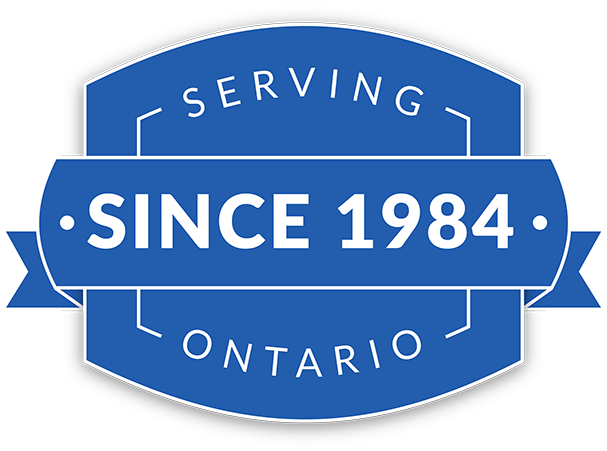
The Hidden Costs of Owning a Car in 2025
Yes, beyond the purchase price, owning a car in 2025 comes with many hidden costs—including depreciation, financing interest, insurance, maintenance and repairs, subscriptions, parking, tolls,...

As extreme weather events become more frequent and severe, business owners in Ontario are facing a new kind of threat: climate risk. Floods, wildfires, ice storms, heatwaves—these are no longer once-in-a-decade events. They’re happening more often, causing billions in damage and disruption. Whether you own a storefront, manage a fleet, or operate out of a warehouse, it’s time to ask yourself: is my business ready?
Future-proofing your business against climate risk means understanding your vulnerabilities, strengthening your infrastructure, and building a comprehensive insurance strategy that protects you from both sudden disasters and slow-developing environmental shifts.
Climate risk is already reshaping how Ontario businesses operate. From physical threats like flooding and fire to regulatory and reputational pressures, the impacts are broad and growing. To protect your business, it’s essential to understand the different types of risk you’re up against and how they show up in your sector.
Ontario businesses are already experiencing more frequent flooding, wind damage, and seasonal unpredictability. Whether it’s frozen pipes, wildfire smoke shutdowns, or sudden flash floods, the risks are real and growing.
Environmental policies are evolving. New emissions rules, carbon taxes, and reporting requirements could raise costs or disrupt operations. Customers are also looking for sustainability in the companies they support.
Agriculture, retail, construction, logistics, hospitality, and healthcare all face unique climate challenges. For example, a heavy rainfall event may shut down a construction site or flood an agricultural supply chain.
As climate-related events increase, the insurance landscape is shifting. What was once considered a rare exception is now becoming part of standard underwriting. Rising claims have led to higher premiums, stricter policy terms, and more exclusions, especially for businesses in high-risk areas. Understanding how insurers view climate risk can help you secure the right protection before disaster strikes.
As claims related to weather events rise, insurers are tightening policies and increasing premiums—especially on commercial property, flood, and equipment coverage.
Underwriters now use highly localized climate risk maps to determine your policy’s cost and limits. Businesses in flood plains or wildfire zones could face exclusions or need specialized coverage.
Beyond physical damage, climate disasters often halt operations. Business interruption coverage bridges the gap, helping cover lost revenue and relocation costs during recovery.
The good news? You’re not powerless. While no business is immune to climate disruptions, you can take proactive steps to reduce your exposure, protect your operations, and improve your resilience. Here are seven practical strategies every Ontario business should consider to stay ahead of climate-related challenges.
Evaluate your location, infrastructure, and operations for climate-related vulnerabilities. Include facility access, inventory, tech infrastructure, and supply chain reliability.
Simple actions like installing sump pumps, sealing windows, updating HVAC, or trimming trees near your facility can go a long way. Consider backup power systems and elevated storage for flood-prone areas.
Relying on a single supplier or route puts you at risk. Ensure you have backups or alternate logistics options in case weather disrupts transportation or production.
Outline how your business will respond to various climate scenarios: flood, fire, power outage, etc. Include emergency contacts, off-site backups, and employee communication plans.
Work with a broker to review what climate-related events are covered and what aren’t. You may need endorsements for overland water, sewer backup, wildfire, or windstorm.
From evacuation protocols to insurance claim documentation, your staff needs to be part of the plan. Training boosts readiness and response speed.
Many disasters come with warning. Use weather alert apps and set thresholds for action—like moving inventory or closing early.
In 2023, a mid-sized logistics company based in southern Ontario experienced torrential rain that overwhelmed stormwater systems. The warehouse flooded, forcing a three-week halt in operations.
They had physical damage insurance, but not business interruption coverage. The result? A $280,000 revenue loss and strained supplier relationships. After this wake-up call, the company added proper coverage and updated its emergency plan.
Insurance alone isn’t enough. Future-proofing is about anticipating disruption and designing a business that can adapt. That means evaluating your infrastructure, diversifying your operations, and training your team to act fast when the weather turns.
The businesses that thrive in a changing climate will be the ones that planned for it.
At Regal Insurance, we help Ontario business owners navigate the evolving risks posed by climate change. Our brokers can review your policies, identify climate-related gaps, and recommend cost-effective coverage strategies tailored to your needs.
Want to build a business that stands strong in any weather? Let’s talk. Your future-proofing strategy starts here.

Yes, beyond the purchase price, owning a car in 2025 comes with many hidden costs—including depreciation, financing interest, insurance, maintenance and repairs, subscriptions, parking, tolls,...

Tariffs don’t directly raise your auto insurance premiums, but they do make car repairs more expensive—and higher repair bills often translate into higher insurance rates....

Yes, studies show that keyless cars are more likely to be stolen in Ontario due to “relay attacks,” where thieves amplify your fob’s signal to...

No obligation, just great information!
